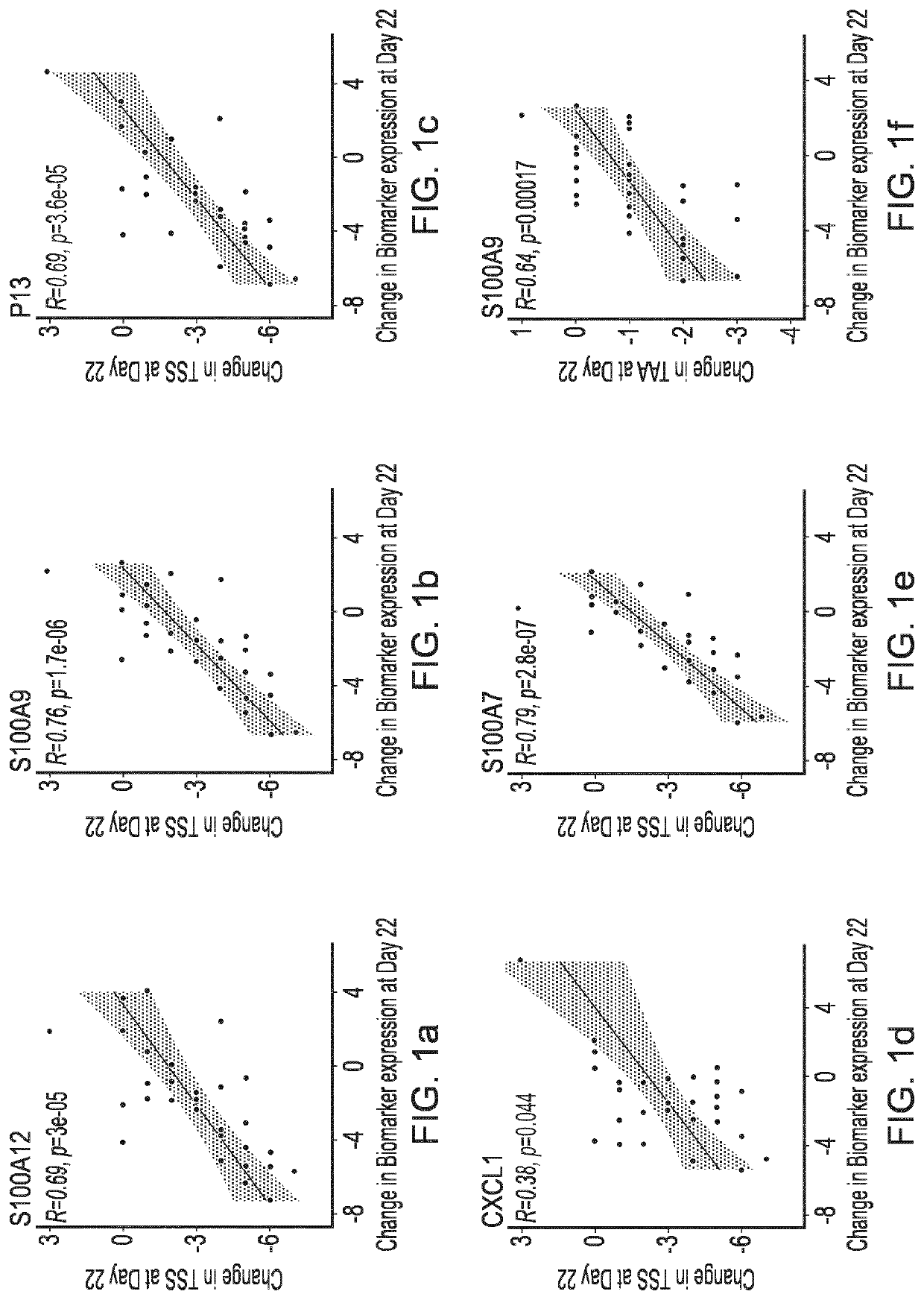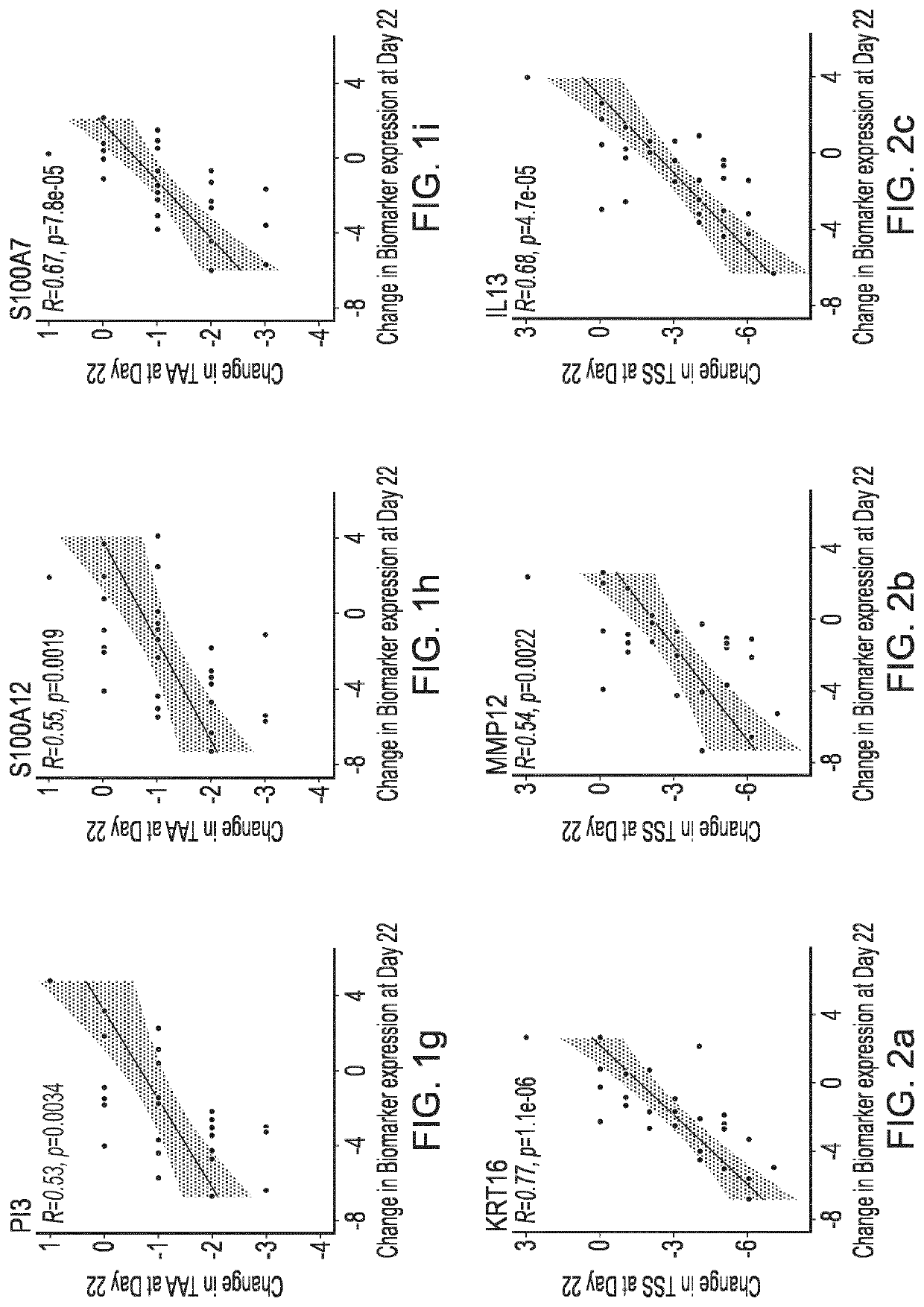Halogenated salicylanilides for the treatment of dermatitis
a technology of halogenated salicylanilide and dermatitis, which is applied in the direction of dermatological disorders, drug compositions, and aerosol delivery, etc., can solve the problems of no clinical data, no clinical data, and the dermatitis lesions are prone to bacterial infection
- Summary
- Abstract
- Description
- Claims
- Application Information
AI Technical Summary
Benefits of technology
Problems solved by technology
Method used
Image
Examples
example 1
us Topical Niclosamide Formulations
Non-Aqueous Topical Niclosamide Gel Formulation
[0322]The topical gel compositions shown in Table 2 were prepared:
TABLE 2CompositionFormulation AFormulation BRaw material INCI or PhEur name (trade name)% (w / w)% (w / w)Niclosamide, anhydrous2.04.0Macrogol 400 (PEG 400)95.693.6Carbomer 974P (Carbopol 974P)2.42.4
[0323]The composition was prepared as follows. Niclosamide 200 mg, PEG 400 (9.56 g for Formulation A and 9.36 g for Formulation B) were weighed in blue cap bottles. The mixture was stirred at room temperature until a clear solution formed. 240 mg. Carbomer 974P was then dispersed in the niclosamide PEG 400 solution. The dispersion was homogenized and degassed. The suspension was then heated at 70° C. and stirred mechanically at 250 rpm until a homogeneous dispersion formed after about 30 minutes. The final solution was then cooled to give the title non-aqueous gel compositions.
[0324]The final formulations were protected from light prior to furthe...
example 2
Trial to Assess the Safety and Efficacy of Topically Applied Niclosamide in Healthy Volunteers and Patients with Atopic Dermatitis
Study Design
[0331]A prospective, single centre, randomized, double-blind, Placebo controlled study in two Phases.
Phase One of the Trial—Testing on Healthy Volunteers
Primary Objective of Phase One of the Trial
[0332]The primary objective of the study is to demonstrate the safety and tolerability of topical niclosamide formulations in healthy volunteers.
Secondary Objectives for Phase One of the Trial:
[0333]To determine the local and systemic exposure of the topical niclosamide composition.
Exploratory Objective:
[0334]To collect illustrative information on local tolerability of the topical niclosamide composition.[0335]To determine the best tolerated formulation to advance into Phase II of the trial.
Patients in Phase One:
[0336]Randomization ratio 1:1; randomized niclosamide composition or Placebo application on right or left arm.
Inclusion Criteria:
[0337]Signed...
example 3
Blind, Randomized, Intraindividual Vehicle-Controlled, Phase II Study to Evaluate Efficacy and Safety of Topically Applied Niclosamide in Patients with Moderate Atopic Dermatitis
[0409]The topical niclosamide Formulation G, as described in Table 3 above, was tested in the following clinical trial.
Rationale for the Study
[0410]Wu et al (2014, Ibid) reports that niclosamide exhibited anti-inflammatory properties in vitro by modulating the activation of dendritic cells and repressing the expression of proinflammatory cytokines. This study will investigate whether niclosamide possesses anti-inflammatory properties capable of translating into a therapeutic effect on the signs and symptoms of atopic dermatitis.
Study Design
[0411]31 patients with moderate atopic dermatitis (Investigator Global Assessment [IGA] of 3) were included in this double-blind, randomized, intraindividual vehicle-controlled, Phase 2 study to evaluate the efficacy and safety of topically applied niclosamide. Patients ha...
PUM
| Property | Measurement | Unit |
|---|---|---|
| water-soluble | aaaaa | aaaaa |
| weight | aaaaa | aaaaa |
| swelling | aaaaa | aaaaa |
Abstract
Description
Claims
Application Information
 Login to View More
Login to View More - R&D
- Intellectual Property
- Life Sciences
- Materials
- Tech Scout
- Unparalleled Data Quality
- Higher Quality Content
- 60% Fewer Hallucinations
Browse by: Latest US Patents, China's latest patents, Technical Efficacy Thesaurus, Application Domain, Technology Topic, Popular Technical Reports.
© 2025 PatSnap. All rights reserved.Legal|Privacy policy|Modern Slavery Act Transparency Statement|Sitemap|About US| Contact US: help@patsnap.com



